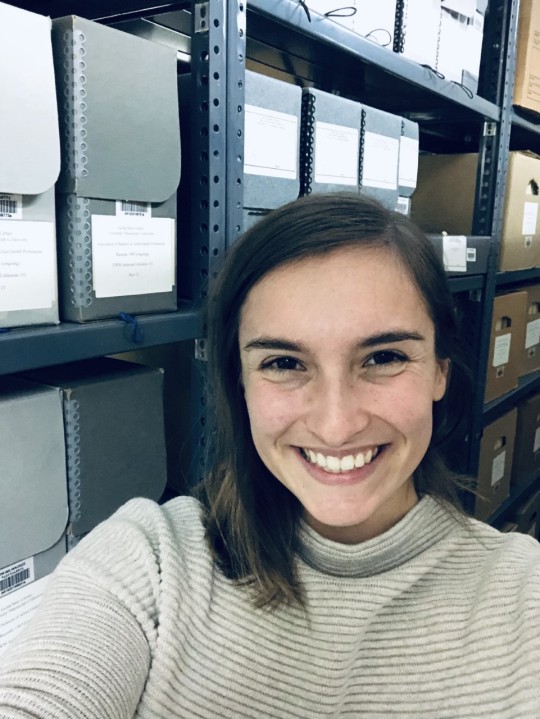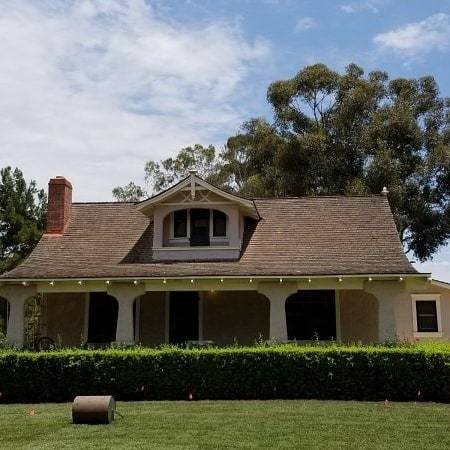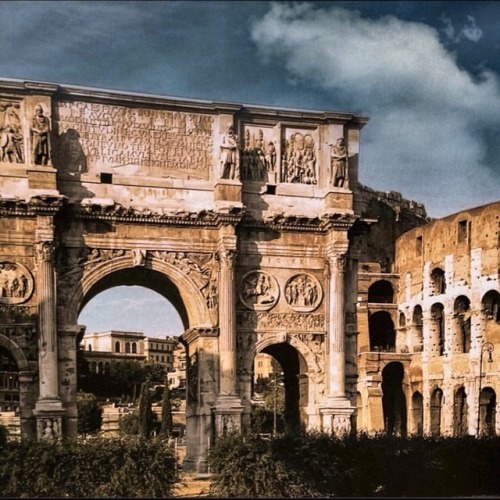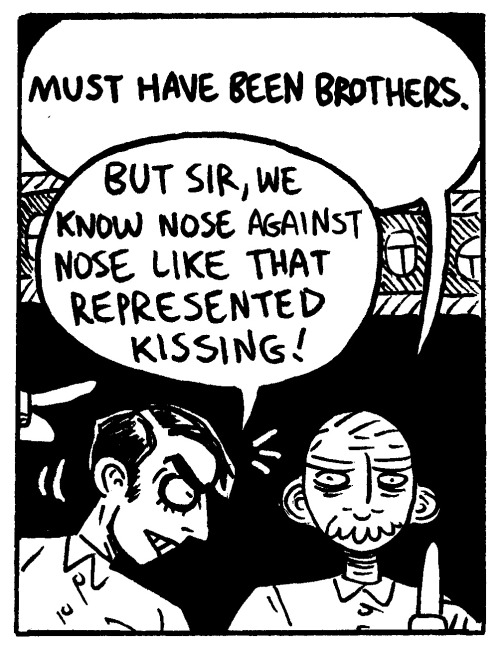#historians
The @ocparks maintains a four acre local history site in Lake Forrest, CA. The rangers interpret “four fully restored and furnished historic buildings that span the early history of the Saddleback Valley and El Toro area from the Mexican Rancho era (Serrano Adobe, circa 1863), to the founding of the town of El Toro (El Toro Grammar School, 1890; St. George’s Episcopal Mission, 1891), through the citrus farming days of the early twentieth century (Harvey Bennett Ranch House, 1908).”
They offer guided #tours and seasonal events for the community. Visit 25151 Serrano Road Lake Forest, CA 92630-2534. Contact (949)923-2230 or [email protected]. The park is open Tuesday through Saturday, 9 a.m.. to 5 p.m. The park is closed for county holidays. Learn more at ocparks.com/historic/heritage.
Read 70degrees.org/heritage-hill-heritage-park for additional information.
#fbf #flashbackfriday #fieldnotes #fieldnotefriday #history #historians #southwest #CA #California #70degrees #archive #preserve #exhibit
https://www.instagram.com/p/B45Uo2fp25q/?igshid=hzedfcoysxwz
Post link
We are excited to be on the @sworalhistory board! Jennifer is the president and Cindy is the California delegate.
#oralhistory #history #historians #southwest #CA #California #narrative #archive #preserve #exhibit #fbf #70Degrees #OHA2019 #sohaatoha2019 #SOHA2019
https://www.instagram.com/p/B4DEPxcpNUM/?igshid=15dk84ocdsfve
Post link
We are getting excited for the @ohassociation conference sponsored by @sworalhistory in Salt Lake City October 16-20! Our oral history collections are growing and we look forward to sharing our research with these networks.
#archive #preserve #exhibit #70degrees #archives #preservation #Exhibition #Exhibition #oralhistory #history #historians #southwest #CA #California #narrative #story #Rode #Canon #audio #equipment
https://www.instagram.com/p/B3bBv6dJHlb/?igshid=1q5c6m3v96tpg
Post link
Ronald Reagan Presidential Library and Museum has an impressive site. Instead of a typical orientation film, you will be inpressed by the museum’s Reagan #hologram. We viewed the ranch narrative. “The Tack Room at Rancho del Cielo – President #Reagan has just returned from a #horseback ride and he talks to us about the Ranch and how it helps him to balance the pressures of the Oval Office, and then tells us a little about his ideas on #freedom.”
While you visit, be sure to visit the archive. #October is the designated month for American archives. “As a Presidential Library administered by the National Archives and Records Administration (#NARA), the Reagan Library, under the authority of the Presidential Records Act, is the repository of presidential records for President Reagan’s administration. The Library’s holdings include over 60 million pages of documents, over 1.6 million #photographs, a half million feet of motion picture #film, tens of thousands of audio and video tape, and over 40,000 #artifacts.”
The are located at 40 Presidential Drive |Simi Valley, CA 93065. The are open hours are 10 a.m. – 5 p.m. seven days a week.
#archive #preserve #exhibit #70degrees #archives #preservation #exhibition #CA #history #historians #southwest #RonaldReagan #nationalarchives #USA (at Ronald Reagan Presidential Library)
https://www.instagram.com/p/B3MznO5pYBy/?igshid=16wut33azo8tb
Post link
Most girls = obsessed with hot guys.
Me = obsessed with historians.
…A particularly vital question is the relationship between economic theory and history. Here again, as in so many other areas of Austrian economics, Ludwig von Mises made the outstanding contribution, particularly in his Theory and History.32 It is especially curious that Mises and other praxeologists, as alleged “a priorists,” have commonly been accused of being “opposed” to history. Mises indeed held not only that economic theory does not need to be “tested” by historical fact but also that it cannot be so tested. For a fact to be usable for testing theories, it must be a simple fact, homogeneous with other facts in accessible and repeatable classes. In short, the theory that one atom of copper, one atom of sulfur, and four atoms of oxygen will combine to form a recognizable entity called copper sulfate, with known properties, is easily tested in the laboratory. Each of these atoms is homogeneous, and therefore the test is repeatable indefinitely. But each historical event, as Mises pointed out, is not simple and repeatable; each event is a complex resultant of a shifting variety of multiple causes, none of which ever remains in constant relationships with the others. Every historical event, therefore, is heterogeneous, and therefore historical events cannot be used either to test or to construct laws of history, quantitative or otherwise. We can place every atom of copper into a homogeneous class of copper atoms; we cannot do so with the events of human history.
This is not to say, of course, that there are no similarities among historical events. There are many similarities, but no homogeneity. Thus, there were many similarities between the presidential election of 1968 and that of 1972, but they were scarcely homogeneous events, since they were marked by important and inescapable differences. Nor will the next election be a repeatable event to place in a homogeneous class of “elections.” Hence no scientific, and certainly no quantitative, laws can be derived from these events.
Mises’s radically fundamental opposition to econometrics now becomes clear. Econometrics not only attempts to ape the natural sciences by using complex heterogeneous historical facts as if they were repeatable homogeneous laboratory facts; it also squeezes the qualitative complexity of each event into a quantitative number and then compounds the fallacy by acting as if these quantitative relations remain constant in human history. In striking contrast to the physical sciences, which rest on the empirical discovery of quantitative constants, econometrics, as Mises repeatedly emphasized, has failed to discover a single constant in human history. And given the ever-changing conditions of human will, knowledge, and values and the differences among men, it is inconceivable that econometrics can ever do so.
Far from being opposed to history, the praxeologist, and not the supposed admirers of history, has profound respect for the irreducible and unique facts of human history. Furthermore, it is the praxeologist who acknowledges that individual human beings cannot legitimately be treated by the social scientist as if they were not men who have minds and act upon their values and expectations, but stones or molecules whose course can be scientifically tracked in alleged constants or quantitative laws. Moreover, as the crowning irony, it is the praxeologist who is truly empirical because he recognizes the unique and heterogeneous nature of historical facts; it is the self-proclaimed “empiricist” who grossly violates the facts of history by attempting to reduce them to quantitative laws…
— Murray Rothbard, Praxeology: Methodology of Austrian Economics
being a historian on tumblr is such a uniquely bizarre experience. almost everyone will believe what you say as long as you write an all-caps rant starting with something like “LISTEN UP YOU DUMB FUCKSHITS” but god help you if you attempt to factcheck a single statement or disagree with someone else’s opinion. it’s like a conference on steroids except half of the academics have never even touched a database in their life. one time i got an ask calling me an idiot sjw because i said julius caesar, a guy who wrote seven whole books about his war crimes, was a war criminal. this place is an academic’s hell and i love it
we shouldn’t trust historians to teach us history because they are people with biases. instead we should learn from instagram influencers, who would never lie to us.
”While the Colosseum stands, Rome shall stand; when the Colosseum falls, Rome shall fall; when Rome falls, the world shall fall.“
–Venerable Bede-
Post link
The Arch of Constantine is a triumphal Arch in Rome, situated between the Colosseum and The Palatine Hill. It was erected by the Roman Senate to commemorate Constantine’s Victory over Maxentius at the battle of Milvian Bridge on October 28, 312. The Arch is 21m high, 25,9m wide and 7,4m deep. It has three archways, the central one being 11,5m high and 6,5m wide, the lateral archways 7,4m by 3,4m each. The top, called attic, is a brickwork reveted with marble. A staircase formed in the thickness of the each arch is entered from a door at some height from the ground, in the end towards the Palantine Hill. Rome, Italy.
Post link
The Temple of Concordia is an Ancient Greek temple in the Valley of the Temples in Agrigento, on the south coast of Sicily, Italy.
Post link
I flipped through my diary today and realised how incredibly useless and possibly frustrating it would be to future historians. It’s all crycrycry about my silly little life interspersed with the rare, brief, off-hand remark about things with major importance, like “Btw Covid is still around :(”
Kevin Starr describes the debate over allowing California into the Union, as it hung on the issue of slavery, or the South’s “peculiar institution” (p73). This is a belittling way to describe slavery, as if it were peculiar to the South, or particular to the antebellum period. It is representative of a certain misconception that many continue to perpetuate, as described on the website for the modern non-profit anti-slavery group, TraffickFree.org:
“ there are more slaves now than ever before in human history - approximately 27 million around the world
(….)
“17,500 slaves are brought into the United States every year “
So in the least it is a poor choice of words on Starr’s part, but also seems to contradict information he admits to later in the chapter, albeit in a mitigated vocabulary:
“immigrants who arrived at Sutter’s Fort (…) contracted from him the labor (and sometimes it has been alleged, the sexual services) of Native Americans indentured to Sutter or otherwise under his control, many of them little better off than slaves.” [pp77-78]
I must wonder what he qualifies in their situation as being ‘not quite as bad as’ slavery-slavery.
Like the seats of a teeter-totter, the surge of outsiders into California during the Gold Rush brought with it a commensurate decline in the lives and cultures of Native Americans. In many ways this pattern copies the earlier interaction of Spanish colonials and Native’s in the first days of settlement and the introduction of the mission-system. For this reason, when Starr waxes poetically about the Gold Rush “…reprising the dreams of the Spanish conquistadores, explorers, and maritime adventurers…” or that “the quest for El Dorado was now being Americanized with its psychological and mythic hold as powerful as ever” [p.81], he belies the real pattern of greed and exploitation that was recurring.
With that being said, the Gold Rush must still be credited with bringing an unprecedented cultural diversity to the State, even at the expense of the indigenous cultural diversity that was supplanted in the process. This diversity would at least provide grounds for a cosmopolitan conversation on race and cultural diversity, even if it was rather immature in its early days. Truly people came from all over the world and became a part of this new conversation.
Informative Ancient Egypt Comics: BROS
Our1st place contest winner requested a Niankhkhnum and Khnumhotep comic as their prize.
I took a class about Ancient Egypt last semester and we had a whole lecture dedicated to talking about how gay Niankhkhnum and Khnumhotep were.
Their tomb walls were decorated with scenes of them ignoring their wives in favor of embracing each other. In one scene, the couple is seated at a banquet table that is usually reserved for a husband and wife. There’s an entire motif of Khnumhotep holding lotus flowers which in ancient Egyptian tradition symbolizes femininity. Khnumhotep offers the lotus flower to Niankhkhnum, something that only wives were ever depicted as doing for their husbands. In fact, Khnumhotep is repeatedly depicted as uniquely feminine, being shown smaller and shorter than his partner Niankhkhnum and being placed in the role of a woman. Size is a big deal in Egyptian art, husbands are almost always shown as being larger and taller than their wives. So for two men of equal status to be shown in once again, a marital fashion, is pretty telling. Not to mention they were literally buried together which is the strongest bond two people could share in ancient Egypt, as it would mean sharing the journey to the afterlife together.
And yet 90% of the academic text about these two talks about these clues in vague terms and analyze the great “brotherhood” they shared, and the enigma of Khnumhotep being depicted as feminine. Apparently it’s too hard for archaeologists to accept homosexuality in the ancient world, as well as the possibility of trans individuals.On the last note, I was walking around the Field Museum of Natural History in Chicago and there is a mummy on exhibit. It caught my attention because the panel that was describing it was talking about how it was a woman’s body in a male coffin and wow, the Egyptian working that day really screwed that up. My summary, not actual words, sorry I can’t remember verbatim but it basically said that someone screwed up.
They claimed that the Egyptians screwed up a burial.
The Egyptians. Screwed up. A burial.
Now I’m not an expert in Ancient Egypt but from what I know, and what the exhibit was telling me, burials and the afterlife and all that jazz DEFINED the Egyptian religion and culture. They don’t just ‘screw up’. So instead of thinking outside the box for two seconds and wonder why else a genetically female body was in a male coffin, the ‘researchers’ blatantly disregard the rest of their research and decided to call it a screw up. Instead of, you know, admitting that maybe this mummy presented as male during his life and was therefore honorably buried as he was identified. But it would be too much of a stretch to admit that a transgender person could have existed back then.
(Sorry I can’t find any sources online and it’s been like 2 years but it stuck in my mind)
There’s a lot of bigoted historian dragging on my dash these days and it makes me happy.
Once again, more proof that we queers have ALWAYS been here, and it’s a CHOSEN narrative to erase them.
Reblog because ancient gay power
ALWAYS. REBLOG. THIS.
And also ancient gay power.
Ancient Gay Power
Can we talk about the Vikings for a second? Because this same fuckery applies there.
First, you’ve of course got the biological women who were buried as warriors.
One such woman was buried with two horses, heaps of weapons and, most notably, a sort of gameboard in her lap that was used to plan battle strategy. All of this indicates a Viking who commanded troops and led them into battle. Naturally, therefore, it was impossibleit was a woman. Researchers were forced to test the bones four different times, each time concluding that, yes, this is a woman. There are still people who argue that there are two bodies in the graves or that, basically, they scienced wrong.
The body of another biological woman was discovered in a grave surrounded by weapons but it was automatically dismissed she was a warrior because, you know, woman. Then they looked at her skull more closesly and saw that she took a sword hack to the face and. it. might. not. have. been. what. killed. her. See a reconstruction of her face using facial recognition software.
Now let’s talk about the myth that Viking men had long hair. Every image and description we can find of Viking men from their time period shows them with short, practical haircuts. That’s not to say that no Viking man ever had long hair, but in general, hair seems to have been worn short in a number of styles - after all, sea wind is not kind to long hair, nor is horseback riding or battle; you can get blinded, tangled up or grabbed by your enemy.
So where did this myth come from? The same place as all the rest of this: bigoted historians. In the 19th century, scholars were really beginning to delve into the old Norse sagas and translate them and speculate on their meaning.
If you’re at all familiar with the Hebrew Old Testament, you’ll know the God contained therein is mostly large, angry and masculine but with moments of softness, empathy and compassion. He is even called El Shaddai which translates roughly to something like ‘one who feeds with breasts’. This is further expounded on in the Christian New Testament with God compared to a mother, a refuge, etc. He’s not the only high god given male and female attributes.
Odin is portrayed similarly (large, angry and masculine) but like the Hebrew/Christian God can be deeply caring. At times he was specifically depicted with the long hair of a woman to make this very obvious. Scholars could not believe that almighty ODIN could have a female side, so they decided that Viking men must have had long hair.
The second component was the existence of a cult called what translated to Long-Hair(Like A Woman’s). In mythology there were two brothers who went on various adventures together, including slaying a dragon. Whether they were based on any actual people or not is unknown. What is known is that after their deaths they more or less became the Norse equivalent of saints and a cult formed around them. For reasons that are unclear, these cult priests, who were biologically male, dressed in womens’ clothes and wore their hair long like women, earning them their name. They were fearsome warriors, often taking up arms to defend their shrine or to join in a particular cause and battle, fighting in their womens’ garments.
Again, historians could not accept the idea of transwomen Vikings or even Vikings who embraced their sacred feminine sides, which ever the case may be, and instead, long hair was just a Viking way.
This erronous myth of long-haired vikings is everywhere and the next time you see it, remember it’s the product of bigots and historians who can’t be bothered to do their job properly.
Post link
Meet intern Maddi Brenner, third-year graduate student in the coordinated master’s degree program for Library and Information Science (MLIS) and Urban Studies (MS). She is in her final year of the program and plans to graduate in May 2022.

What is your area of study and research interests?
My research interests include urban history, public libraries, mental health & pedagogy, and anything archives.
Tell us about your thesis research and field work.
I am currently in the research phase of my thesis. I am analyzing the expansion of branch libraries and the implementation of a coordinated branch library system in the city of Milwaukee during the 1960s and 70s. I am reviewing the goals of the plan, its development and success post-construction. So far, I have noticed several discrepancies in funding and budget allocations, library location issues, council disagreements and neighborhood dynamics involved in library development.
I am also a fieldworker at Marquette University where I am processing the previously restricted collection of Joseph McCarthy (JRM). If you are interested in any random facts about the 1950s, I seem to have copious amounts of knowledge on the topic. One thing I am working on now is transferring relevant material related to and by Jean Kerr Minetti (the wife, and later widow, to Joe) from the JRM collection to its own open series. The documentation of women involved in the life of famous male figures is not often represented or even in its own narrative. The goal is to connect a sort of interrelatedness to the two series, but ultimately allow the individuals to stand alone in their interpretation.
It reminds me that although work has and is being done to address issues in collection arrangement and description, there is still more to do.
What draws you to the archives, special collections, or libraries profession?
I am really interested in how primary sources connect us to certain understandings of our history, especially through outreach, reference, and research.
What is your favorite collection within the archive – or most interesting record/collection that you’ve come across?
I don’t have a true favorite, but I do think it’s cool that we hold the Society of American Archivists records. It is a massive collection with over 350 boxes and more than 3,500 digital files. Organization of the material has been re-arranged multiple times with new accessions up to 2018. I am not only fascinated by the history of archiving and collection management, but also how these records shaped issues of privilege, representation, and accessibility in the archives today.
What are you working on now for the archives?
Currently, I am working on research regarding reference and WTMJ film footage. The purpose of the project is to explore the frequency of reference requests and the value of preserving WTMJ footage. I will be analyzing both social media and e-mail as platforms crucial in access and outreach processes.
I also regularly coordinate archive transfers to other Wisconsin schools. It is fun to see what type of material is out there from other repositories and how impactful this program can be for researchers. Wisconsin is one of the only states that has this program, so that’s exciting!
What’s something surprising you’ve learned (about yourself as an archivist or about the profession) since you’ve started working at UWM Archives?
Honestly, I’ve learned that no two days are the same at the archives. There is so much going on and almost always a reference inquiry - whether big or small that I can dive into. There is a common misconception that archivists just sit around in an underground storage room all day and though, I surprisingly love being in the storage rooms, that’s far from the truth. We wear many hats.





















